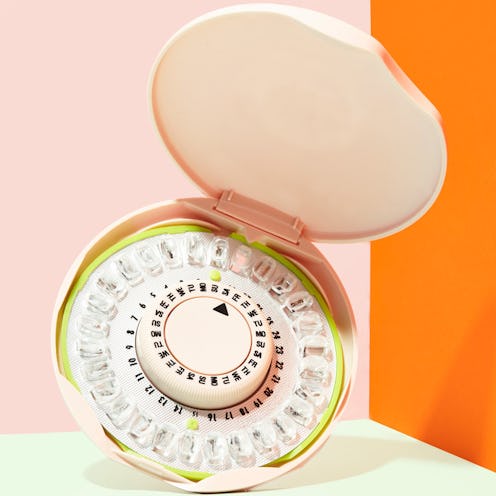Whether you’re switching from pill to patch or have already found your tried-and-true method, you’re likely on some kind of birth control—62% of US women of childbearing age use a form of it. But with so many types on the market, it can be difficult to determine what works best for your body. They all have their drawbacks: Some can lead to unpleasant mood shifts, while others cause breakouts and weight fluctuation. Beyond that, not all birth control is cost-effective, with implants and IUDs running hundreds of dollars—and maybe even more so now that the Trump administration has officially rolled back Obama-era contraception requirements. As the future of birth control coverage remains contentious, we’ve compiled a list of your options (along with their pros and cons) to ease your decision-making process.
Birth Control 101
Today, the Trump administration announced a new contraceptive policy that could affect hundreds of thousands of women with birth control benefits under the Affordable Care Act. The controversial directive, which was hinted at back in May, comes with two major regulations: the first an exemption to employers or insurers that object to providing contraception on the basis of "sincerely held religious beliefs," and the second to those who refuse due to "moral convictions." While it remains unclear the number of organizations that will drop birth control coverage, public health organizations and women's health care advocates are already preparing to take legal steps. The provision takes effect immediately.
Pros: The birth control pill not only regulates your menstrual cycle but often lightens periods and can eliminate PMS-related symptoms like nausea and cramps. It's also been proven to reduce acne and protect against certain types of cancer.
Cons: It's not ideal for busy women, as it doesn't reach peak effectiveness unless you take it at the same time every day. You may experience breast tenderness and spotting during your cycle. You need a prescription and may need to try various brands before finding the one that works best for you. You'll also need to use a condom to protect yourself against STDs.
Pros: Whether you're using male or female condoms, this type of birth control also provides protection against most sexually transmitted diseases, which none of the other methods can claim. Condoms are easily accessible, relatively affordable and don't have any effect on your hormones.
Cons: Planned Parenthood reports that condoms are 82% effective at preventing pregnancy. Most condoms pose a risk for the estimated 2% of people who are allergic to latex. Some also argue that condoms reduce sensation and can interrupt the moment—or worse, break in the middle of sexual activity.
Pros: Also known as the NuvaRing, this method delivers a lower hormone dose (than the pill) that lasts three weeks; it's known to minimize acne while making periods more regular. It also reduces your likelihood of developing ovarian and uterine cancers.
Cons: Like other forms of hormonal birth control, the ring doesn't protect against STDs, so you still need to use a condom. And for women with certain medical conditions, the ring isn't advisable as it can cause side effects like nausea and headaches as well as an increased risk of blood clots.
Pros: This small adhesive patch sticks to your skin and releases hormones, making it quite low maintenance. You need only replace it once a week and remember to take a patch-free week every month.
Cons: It has similar side effects to the pill and the ring. It's also possible that the adhesive will irritate your skin, so it's recommended to put the patch on a different part of the body each week and avoid direct contact with lotions or creams.
Pros: The Depo-Provera injection, which is administered every three months, is extremely effective, low maintenance and an excellent option for those who can't tolerate estrogen. (Progestin-only choices are recommended for smokers and those who are nursing.)
Cons: Because it has the strongest effect on your hormones, the shot can lead to weight gain, decreased sex drive and even depression—in addition to the usual suspects like irregular bleeding, headaches and nausea.
Pros: Intrauterine devices are T-shaped pieces of plastic or copper inserted into the uterus for long-term pregnancy prevention, with some lasting up to 12 years. The levonorgestrel kind (Mirena or Skyla) can also lessen menstrual flow.
Cons: You may feel discomfort and cramps upon insertion by a health care provider, and there's a risk of developing an infection in the first 20 days. Your partner might also be able to feel the strings on the bottom of the device when you have intercourse.
Pros: A small rod that's inserted under the skin of your arm, this method lasts around three years and has all the benefits of the pill, from reducing PMS symptoms to protecting against certain cancers.
Cons: The implant can cost up to $800. And because it requires a minor surgical procedure, you may have some soreness and bruising after the insertion (though this eventually heals) as well as the risk of contracting an infection.
Pros: The ultimate form of pregnancy prevention, sterilization is a permanent procedure that involves blocking the Fallopian tubes. It's a lifetime solution for women who are absolutely certain they don't want children.
Cons: The surgery itself can cost up to $2,500, and although it's possible to undo sterilization, you can run into complications (and have to fork over another couple thousand dollars) doing so. Even then, there are no guarantees of a successful reversal.
